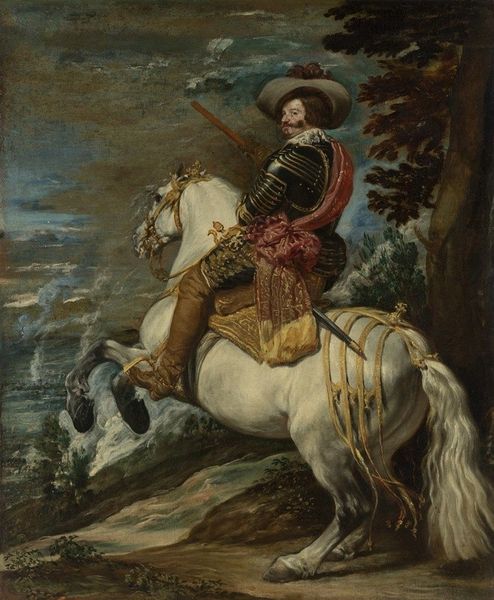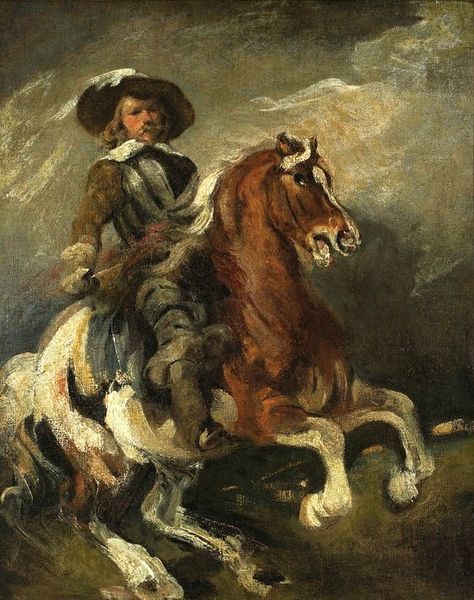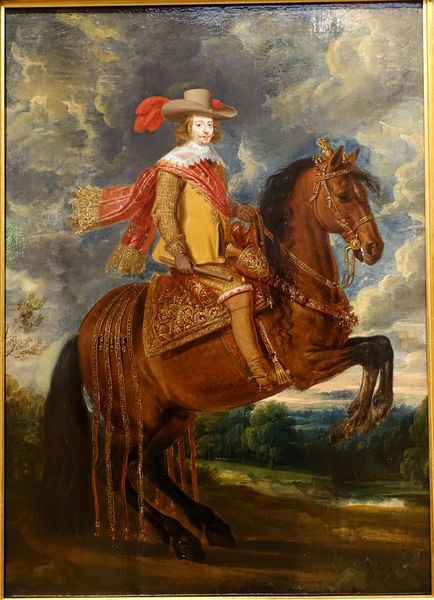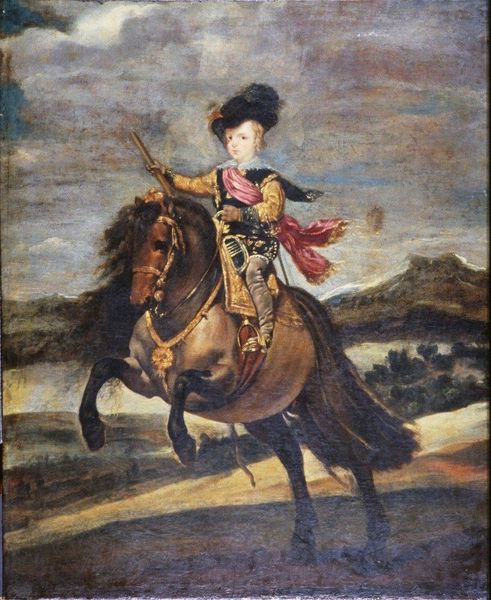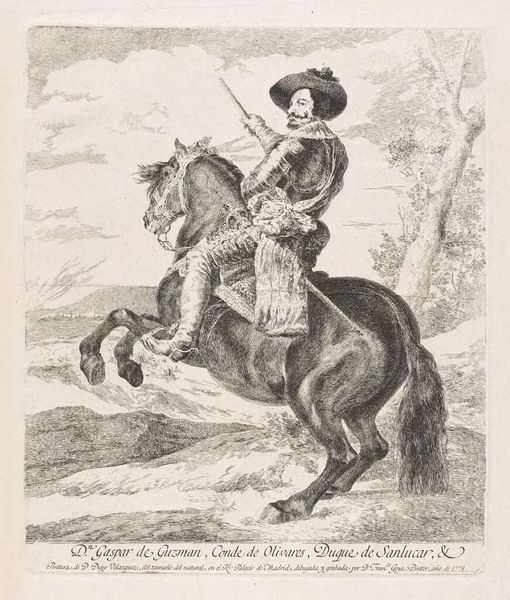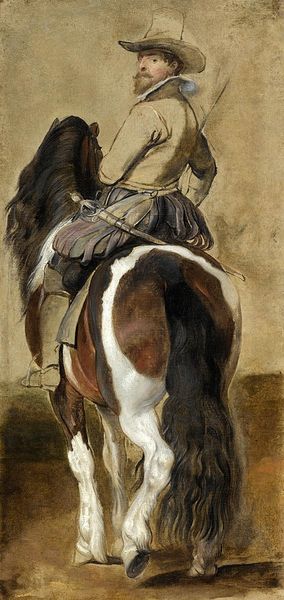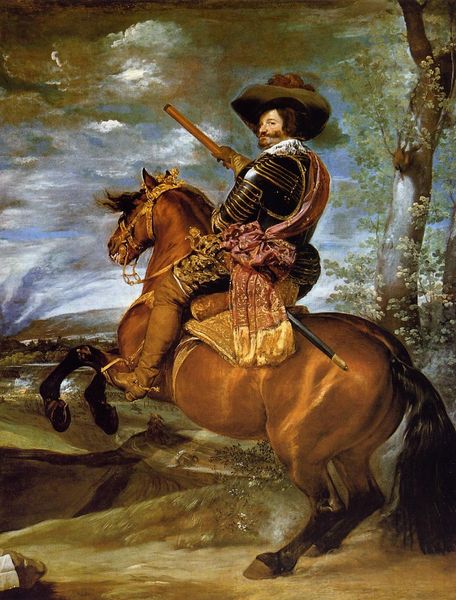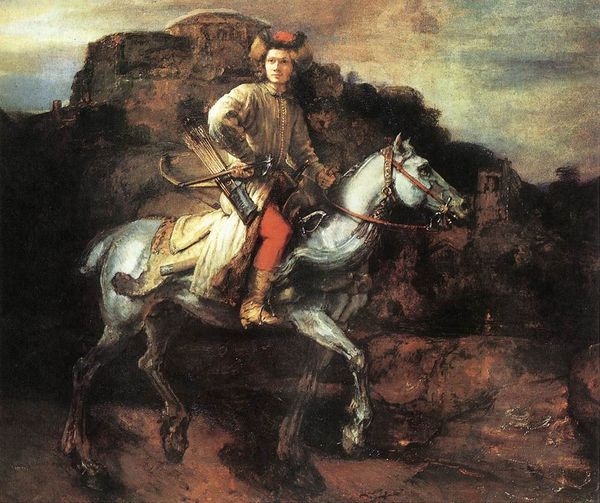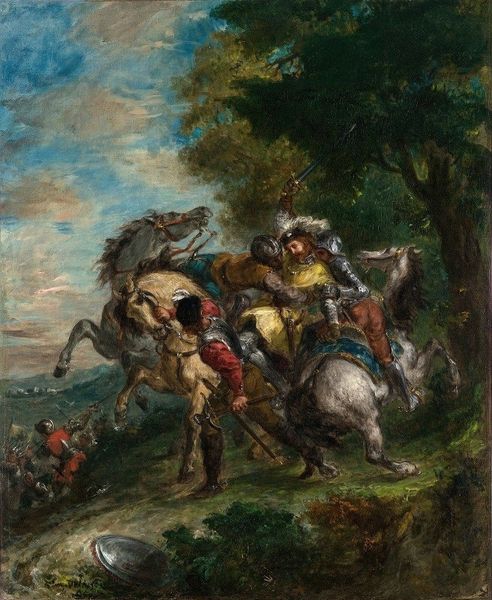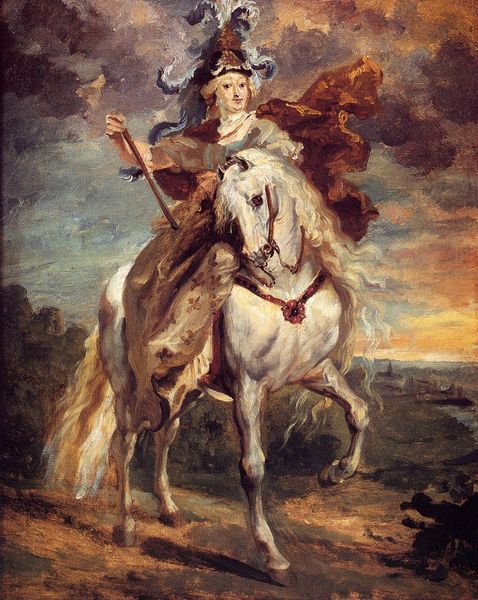
Count-Duke of Olivares on Horseback, after Velazquez 19th-20th century
0:00
0:00
Dimensions: 95.9 x 71.8 cm (37 3/4 x 28 1/4 in.)
Copyright: CC0 1.0
Curator: Denman Waldo Ross's "Count-Duke of Olivares on Horseback, after Velazquez," housed here at the Harvard Art Museums, presents a compelling revisiting of a historical figure. The dimensions are roughly 96 by 72 centimeters. Editor: My immediate impression is one of controlled power and ambition, but also unease. The Count-Duke looks ready for battle but there's instability in the horse's rearing stance. Curator: Absolutely. The equestrian portrait has long served as a potent symbol of authority and dominion. Ross's rendition prompts us to ask: what socio-political commentary is made through the restaging of Velazquez's original image? Editor: The baton he wields isn’t just a symbol of command; it's an echo of royal power, a visual link to the king he represents. The horse itself speaks to both nobility and untamed strength, reflecting Olivares's complex role. Curator: A restaging like this allows us to re-evaluate the original's narrative in our contemporary context. What aspects of power and representation are being examined in Ross's interpretation? Editor: Considering the history of portraiture, revisiting these archetypes allows for interesting visual interpretations of power. I wonder, what are we meant to take away when seeing this familiar symbol displayed anew?
Comments
No comments
Be the first to comment and join the conversation on the ultimate creative platform.
